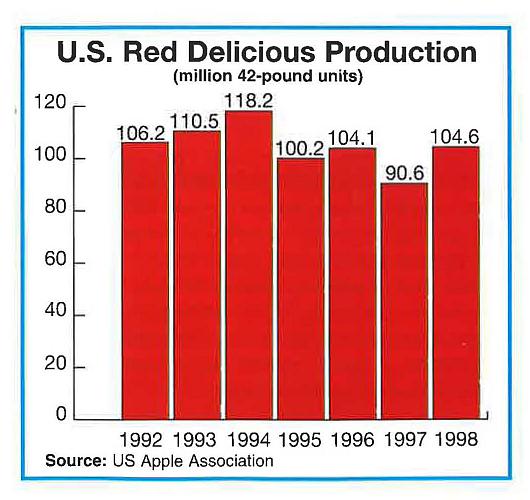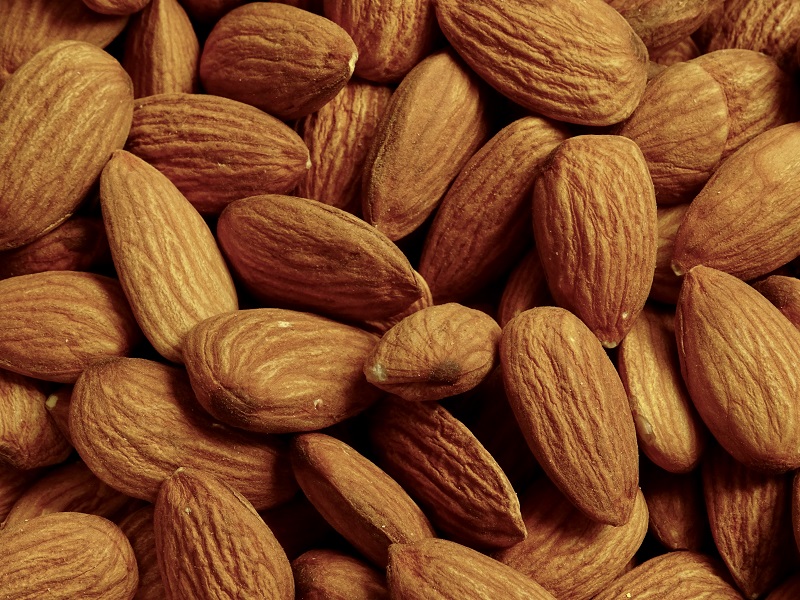Is the Reign of ‘Red Delicious’ Over?
 The boxes were laid out in the Yakima Convention Center for the Washington State Horticultural Association’s 94th annual meeting. They contained big, beautiful crimson apples. But they were mealy. And inside the lecture hall, Dr. Bruce Barritt was verbally pounding them into applesauce.
The boxes were laid out in the Yakima Convention Center for the Washington State Horticultural Association’s 94th annual meeting. They contained big, beautiful crimson apples. But they were mealy. And inside the lecture hall, Dr. Bruce Barritt was verbally pounding them into applesauce.
Barritt, of Washington State University Tree Fruit Extension, delivered the 19th annual Batjer Memorial Lecture. By the time he was done ripping what he termed “obsolete varieties,” including the hallowed ‘Red Delicious,’ he had many of the hundred growers in the room grumbling.
It was no wonder. He had accused many of them taking a cheerleader approach by promoting an obsolete variety with a declining value instead of taking a visionary approach and promoting new varieties with higher values.
Barrit said growers would tell him they grow ‘Red Delicious’ because they grow them better than anyone else. That may be true, he said, but it doesn’t matter if the consumer doesn’t want to buy them. Many in the industry spend too much time thinking about the grower, said Barritt, and not enough time thinking about the consumer. Those consumers are not as concerned with appearance as most growers think, and to compound the problem, growers are paid on appearance.
Slight improvements in quality are not the answer. New varieties are, said Barritt. He concluded by emphasizing that past success can be growers’ greatest enemy and that the industry needs to change. He then projected a slide of a bulldozer pushing a smoldering pile of uprooted trees, saying, “This is the way we change in our industry.”
 A Pep Rally, Of Sorts
A Pep Rally, Of Sorts
Whew. Was Barritt taking on the role of a coach who lays into his team in an effort to spur them on? That’s the way Steve Lutz, the president of the Washington Apple Commission, took it. In fact, his own staff provided more ammunition for ‘Red Delicious’ bashers in the form of a survey that sampled 2,000 U.S. households last June. Among the finding were that color was not a consideration when people go to buy apples, and that of the people eating fewer apples, fully one-third cited poor quality, especially mealiness, as the reason. On the other hand, the survey also showed that Red Delicious is most definitely still the king. Asked their favorite variety, 38% answered ‘Red Delicious,’ with ‘Golden Delicious’ placing a distant second with 16%. And it’s crucial to keep that in perspective, says Lutz.
“After all, we’re talking about the most important apple in America,” Lutz says.
He said the Washington meeting, and others like it across the country, are an important first step in reinventing the’ Red Delicious.’
“We’re going to grower meetings with a brutally frank assessment: ‘Ladies and gentle men, here’s what’s in the supermarket. We can do better.’ If you bury your head in the sand, you’re in trouble. I look at this as a healthy debate,” Lutz says.
Other changes are being made. Recently, the Horticultural Association’s Grade and Pack Committee unanimously voted to approve a program to implement year-around certification to ensure apples are meeting the 12-pound pressure test. The test was originally implemented in 1990, but until now there have been no year-round mandatory inspections, says Lutz.
“This industry is changing, it’s responding to the challenge,” he says. “There’s reason to be optimistic.”
Lutz had better be. His association recently launched a $20 million advertising campaign to boost consumption of Washington apples. TV and radio spots targeting women 25 to 54 years of age, “the stressed moms,” as Advertising Director Tom Swearingen describes them, were to begin running Feb. 1 in 20 markets around the country that account for one-third of Washington apple sales. Because people continue to snack more, the ads will emphasize that apples are the perfect snack food. But Swearingen admits that the best advertising campaign in the world won’t help if the quality’s not there. In fact, he told growers an old advertising adage has it that the quickest way to kill a bad product is with a good advertising campaign.
Quality At Root Of Problem
Quality has certainly been lacking in the past, says Doyle Fleming, an Orondo, WA, grower well-known for his progressive techniques. He says some apples have been shipped out of Wenatchee with a pressure of less than 10 pounds, some as low as 8. If a new 12-pound testing system could ensure 12 pounds of pressure not at the packing house, but in the store — where it counts — he believes there could be a lot of satisfied ‘Red Delicious’ customers.
The system must be changed, says Fleming. He doesn’t grow any’ Red Delicious’ himself, but he says those that do can’t be blamed for the quality problems. They’re getting compensated for color, so they pick later than they would to get a crisp apple.
“You satisfy the man who signs his name at the bottom of the check,” he says.
The debate extends to other states as well. ‘Red Delicious’ is No. 1 in Michigan, with nearly one-quarter of the state’s total apple acreage. The state’s largest packer is Kropf Fruit Co. of Belding, MI. The company’s president, Roger Kropf, says 38% of its apples are ‘Red Delicious.’ He has no plans to cut back, though he concedes there are a lot of lousy Red Delicious out there.
“The Red Delicious apple is not going to go away -people still enjoy it,” he says. “But we have allowed ourselves to not maintain the quality of it at the retail level as we have with other varieties.”
Kropf says the ‘Red Delicious’ doomsayers remind him of some advice he was once given.
“Thirty years ago, I was told ‘Mcintosh’ wouldn’t be around in ten years,” he says with a chuckle. “Today it’s still very popular in the eastern U.S.”
The ‘Red Delicious’ is most certainly not dead, though some of the older, strains may be, says Dan Smith, president of Treco, a Woodburn, OR company that produces 60% of the nation’s dwarfing apple rootstocks.
The demand for ‘Red Delicious’ is certainly going down, says Smith, though not by that much.
“There will always be some market for ‘Red Delicious,’ how much I don’t know,” he says. “The new elite varieties of red will prevail, but not as strongly as in the past.”
Orchard Renewal Not Happening
The problem, says Smith, is that many of the older Red Delicious are found on smaller family farms, which puts them in jeopardy.
“Sure, you can’t switch your whole orchard in one year,” he advises. “But take 25%, or 15% per year.”
Paul Tvergyak, horticultural manager for Chief Wenatchee of Wenatchee, WA, agrees that growers with older strains have a problem.
“We see growers taking out older strains, but they should have done it a long time ago,” he says. “They have been forced to do it. This year they’d have been better off with fallow land.”
Tvergyak also expects to see a decline in ‘Red Delicious’ in general. Ten years ago, ‘Red Delicious’ accounted for 80% of the apples packed at Chief Wenatchee. Today, it’s about 60%. In 2009, he predicts it will drop to about 40%. But that’s hardly dying, and there’s one big reason for it that has nothing to do with consumer preference. There are about 30 warehouses with pre-sizing machines specifically designed to handle huge volumes of ‘Red Delicious.’ With the cost of the machines at about $10 million apiece, the packers have an intense interest in keeping a lot of ‘Red Delicious’ around.
“Each warehouse has a big monster to feed, and you can’t do it with ‘Fujis,’” says Tvergyak. “What most people for get is this whole industry is based on the ‘Red Delicious’ period.”
In other words, King Red may be in decline, but it’s most certainly not dead. It brings to mind something the legendary grower Grady Auvil of Orondo, WA, said about five years ago. Said Auvil, who passed away in December at the age of 93: “The ‘Red Delicious’ is dead, although it may take 20 years to bury it.









